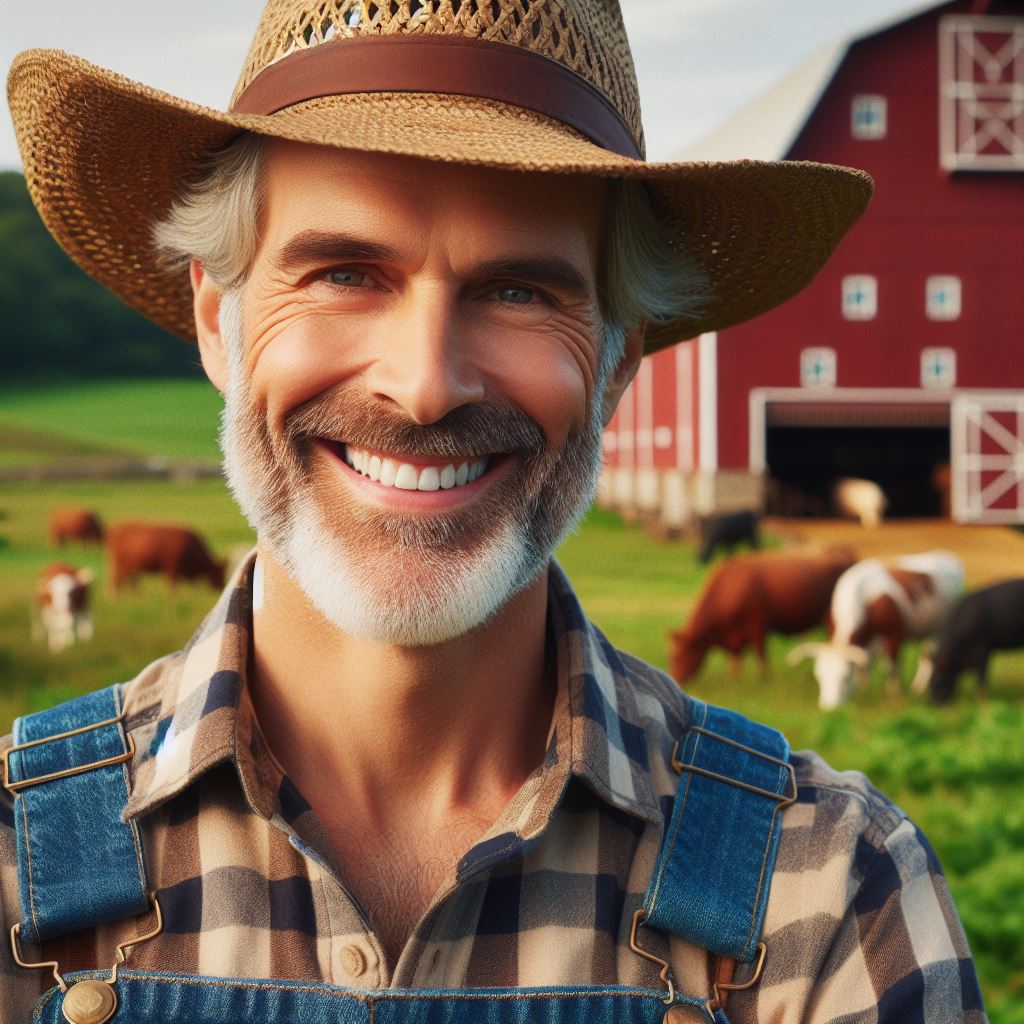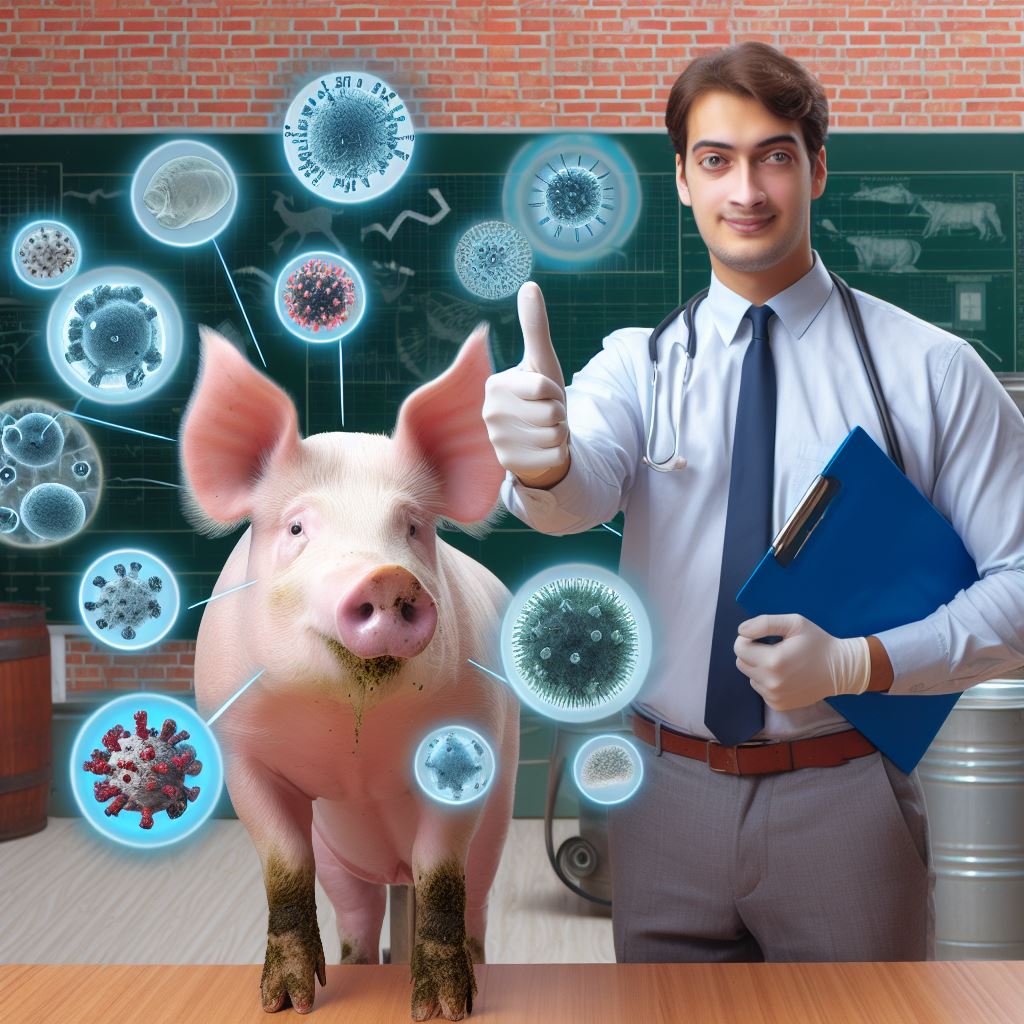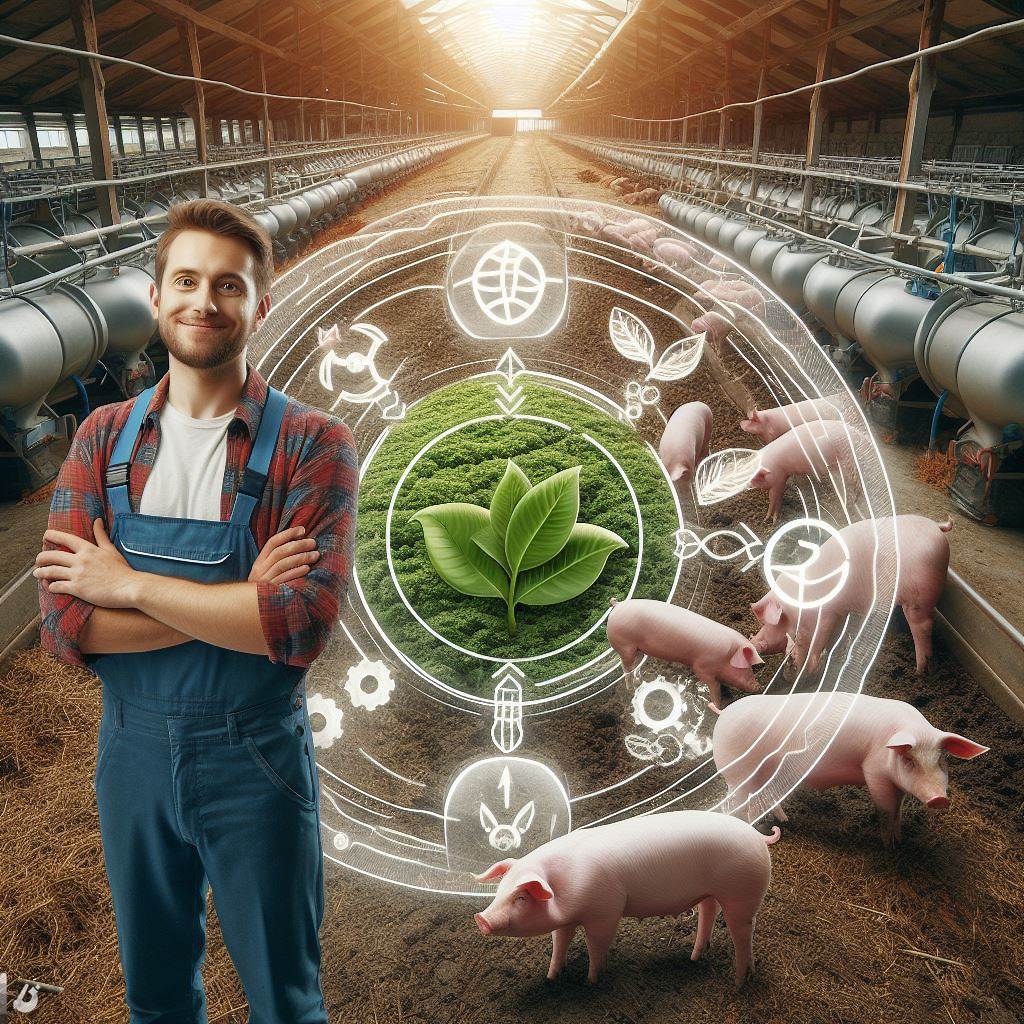Introduction
Livestock care in farming refers to the management and welfare of domesticated animals.
Innovative technologies play a crucial role in ensuring the well-being and productivity of livestock.
In today’s farming practices, livestock care is an essential aspect of ensuring the health and productivity of domesticated animals.
Livestock care involves providing appropriate housing, nutrition, and healthcare to animals like cows, pigs, and chickens.
The well-being of these animals directly impacts the quality and quantity of the products they provide, such as milk, eggs, and meat.
Innovative technologies have revolutionized livestock care, making it more efficient and effective.
One such innovation is the use of automated feeding systems that deliver precise amounts of feed to animals, optimizing their nutritional intake.
This technology helps farmers monitor the dietary needs of each animal, ensuring they receive the right nutrients at the right time.
Another important technology is the use of wearable sensors for monitoring the health and behavior of livestock.
These sensors collect data on vital signs, activity levels, and feeding patterns, enabling farmers to detect early signs of illness or distress.
By identifying potential issues early on, farmers can provide prompt medical intervention and prevent further complications.
Furthermore, the introduction of robotic systems has improved livestock care in various ways.
Robots can clean barns, distribute bedding, and even milk cows, reducing the physical strain on farmers and ensuring consistent and hygienic practices.
Overall, innovative technologies in livestock care enhance animal welfare, improve productivity, and promote sustainable farming practices.
By embracing these advancements, farmers can optimize their operations and provide the best possible care for their livestock, ultimately benefiting both the animals and consumers.
Transform Your Agribusiness
Unlock your farm's potential with expert advice tailored to your needs. Get actionable steps that drive real results.
Get StartedTraditional Methods vs. Tech-based Solutions
Overview of traditional methods used in livestock care
Traditional livestock care methods have been practiced for centuries, involving manual labor and basic tools.
Livestock farmers traditionally rely on their experience, knowledge, and observation skills to handle and care for animals.
Methods such as manual feeding, watering, and cleaning of animal enclosures are commonly employed in traditional livestock care.
Challenges faced with traditional methods
Labor-intensive traditional methods can be physically demanding, time-consuming, and impractical for large-scale operations.
Limited efficiency and productivity due to the reliance on manual labor can hinder livestock farmers from maximizing their production potential.
Traditional methods may also be less precise and effective in identifying and addressing livestock health issues promptly.
Introduction of tech-based solutions
With the advancement of technology, innovative solutions have emerged to address the challenges faced in traditional livestock care.
Advantages of using technology in livestock care
Tech-based solutions offer numerous benefits, including increased efficiency, improved animal welfare, and higher productivity.
Automated feeding and watering systems ensure animals receive the right amount of food and water, reducing human error.
Sensors and monitoring devices enable real-time data collection, providing valuable insights into animal behavior, health, and well-being.
Transition from traditional to tech-based methods
Livestock farmers are gradually transitioning to tech-based methods due to their potential to enhance overall livestock management.
Integration of technology in livestock care reduces the physical strain on farmers, allowing them to focus on other critical aspects.
Tech-based solutions enable better disease detection, prevention, and treatment through early intervention and timely data analysis.
In general, tech-based solutions offer significant advantages over traditional methods in livestock care.
They enable increased efficiency, improved animal welfare, and better overall management of livestock.
The transition from traditional methods to tech-based solutions allows farmers to enhance productivity and address challenges more effectively.
By embracing technology, farmers can optimize their livestock care and ensure a sustainable future for the industry.
Read: Livestock Disease Prevention: Must-Know Tips
Robotics and Automation in Livestock Care
Robotic systems have proven to be game changers in livestock care, enhancing efficiency and animal well-being alike.
Automated feeding systems enable farmers to precisely meet the dietary needs of each animal, promoting health and growth.
These systems accurately dispense custom-made feed mixes based on individual requirements, ensuring optimal nutrition for different stages of an animal’s lifecycle.
Furthermore, robotic milking machines have transformed dairy farming.
The machines use sensors to identify cows and attach milking cups automatically.
This allows cows to be milked whenever they choose, relieving the stress associated with traditional milking routines and increasing milk production.
Showcase Your Farming Business
Publish your professional farming services profile on our blog for a one-time fee of $200 and reach a dedicated audience of farmers and agribusiness owners.
Publish Your ProfileThe robots also monitor milk quality, detecting any abnormalities that require attention.
Remote monitoring and data collection devices provide farmers with valuable insights into their livestock’s health and behavior.
These devices employ sensors to monitor animals’ vital signs, such as temperature, heart rate, and activity levels.
Additionally, rumination sensors detect chewing motion, indicating proper digestion and overall well-being.
Farmers can access this real-time data remotely, enabling timely interventions and preventative measures.
The integration of robotics in livestock care has numerous advantages. Robots never tire or get distracted, ensuring consistent and precise tasks such as feeding or milking.
This reliability translates to increased productivity and reduced labor costs, as fewer human workers are needed for manual procedures.
By delegating repetitive tasks to robots, farmers can focus on other essential aspects of animal husbandry.
Moreover, automation promotes animal welfare. Sensors in robotic systems detect early signs of disease or distress, enabling timely intervention.
For instance, changes in milk composition or quantity can indicate health issues in cows. Robotic systems can alert farmers to anomalies, allowing for immediate veterinary attention and reducing the chances of severe illnesses or losses.
Lastly, robotics and automation have revolutionized livestock care by improving efficiency, productivity, and animal welfare.
Robotic feeding systems, milking machines, and remote monitoring devices have streamlined various aspects of farming.
Farmers can now provide precise nutrition, optimize milk production, and closely monitor animal health, leading to better overall management and profitability.

Wearable Technology for Livestock Tracking and Monitoring
Explanation of Wearable Technology in Farming
Wearable technology refers to devices or sensors that are worn by livestock to gather data and monitor their activities and health.
These devices are designed to be comfortable and non-intrusive, allowing farmers to track and care for their animals more effectively.
Advantages of Using Wearable Devices for Livestock Care
- Enhanced Livestock Management: Wearable technology enables farmers to have real-time information on their animals’ behavior, location, and overall health, improving management and decision-making.
- Early Health Detection: With biometric sensors, farmers can detect early signs of illness in livestock, allowing for prompt treatment and minimizing the risk of disease spread.
- Improved Animal Welfare: By constantly monitoring temperature and humidity, wearable devices ensure that livestock are in optimal conditions, ensuring their comfort and well-being.
- Increased Efficiency: Livestock tracking through GPS devices allows farmers to locate their animals quickly, saving time and effort in search operations.
- Data-Driven Decisions: The data collected from wearable devices provides valuable insights for farmers to make informed decisions regarding their livestock’s diet, health, and overall care.
Types of Wearable Technology Used in Livestock Care
GPS Trackers for Pasture Management
GPS trackers are widely used in farming to monitor livestock’s movements, especially in extensive grazing systems.
These devices provide precise location data, allowing farmers to track their animals’ grazing patterns and prevent straying.
Biometric Sensors for Health Monitoring
Biometric sensors such as heart rate monitors, rumination sensors, and activity trackers provide valuable data on livestock health.
These devices can detect irregularities in behavior, feeding patterns, and overall activity, indicating potential health issues.
Temperature and Humidity Monitors for Animal Comfort
Temperature and humidity are crucial factors affecting livestock comfort and performance.
Wearable devices equipped with temperature and humidity sensors enable farmers to monitor and regulate these conditions, ensuring optimal comfort for their animals.
In fact, wearable technology has revolutionized livestock care by providing real-time data on animals’ health, behavior, and location.
The advantages of using wearable devices in farming are numerous, including enhanced livestock management, early health detection, improved animal welfare, increased efficiency, and data-driven decision-making.
The different types of wearable technology, such as GPS trackers, biometric sensors, and temperature monitors, serve specific purposes in catering to the diverse needs of livestock farmers.
By integrating wearable technology into their farming practices, farmers can ensure the well-being and productivity of their livestock while making informed decisions based on data-driven insights.
Read: Smart Fencing Solutions for Livestock Safety
Data Analytics and Artificial Intelligence in Livestock Care
Data analytics and artificial intelligence are transforming the way farmers care for their livestock.
By utilizing innovative technologies and applications, farmers can improve the health and well-being of their animals while maximizing productivity and profitability.
Data-driven solutions have become integral to modern farming practices.
The collection and analysis of data provide valuable insights into various aspects of livestock care, including diet, health, and reproduction.
This wealth of information allows farmers to make informed decisions and implement targeted interventions that enhance animal welfare and overall farm performance.
Artificial intelligence plays a significant role in livestock management, offering advanced tools for disease detection and prevention.
By leveraging predictive modeling, AI algorithms can identify patterns and anomalies in data, enabling early disease detection.
This proactive approach reduces the risk of widespread outbreaks, leading to healthier livestock populations.
Real-time monitoring powered by AI is another invaluable tool in livestock care.
By continuously tracking vital metrics such as heart rate, body temperature, and behavior, farmers can swiftly detect early signs of illness or distress.
Rapid intervention can significantly improve treatment outcomes and prevent further deterioration in the animal’s health.
Furthermore, AI-based systems can provide farmers with optimal feeding and breeding recommendations.
By analyzing extensive datasets on nutrition, genetics, and environmental factors, AI algorithms can generate customized plans that maximize productivity while minimizing waste.
These recommendations ensure that each animal receives the precise nutrition required for optimal growth and performance, leading to improved profitability for farmers.
Showcase Your Farming Business
Publish your professional farming services profile on our blog for a one-time fee of $200 and reach a dedicated audience of farmers and agribusiness owners.
Publish Your ProfileOverall, data analytics and AI are revolutionizing livestock care by providing farmers with powerful tools to enhance animal welfare and farm productivity.
These technologies enable proactive disease management, early detection of health issues, and personalized feeding and breeding recommendations.
As the agricultural industry continues to embrace innovation, the integration of data-driven solutions and artificial intelligence will play an increasingly crucial role in achieving sustainable and efficient farming practices.
Read: Livestock Behavior: Understanding Your Animals
Challenges and Future Directions
Potential challenges in implementing tech-based solutions in livestock care
- Limited access to technology in rural areas can hinder the widespread adoption of tech-based livestock care solutions.
- High implementation costs may pose a challenge for farmers, especially small-scale ones, who may not have the necessary resources.
- Resistance to change and lack of awareness about the benefits of technology among farmers can impede its adoption.
- Training and education on the use of technology in livestock care may be required to overcome the learning curve.
- The complexity of integrating multiple technologies, such as sensors, drones, and AI, may require specialized expertise.
- Environmental factors, such as extreme weather conditions, can affect the functionality and reliability of technology-based solutions.
Addressing concerns related to data privacy and cybersecurity
- Data privacy and protection are crucial considerations to ensure that farmers’ and animals’ information is not compromised.
- Establishing robust cybersecurity measures can prevent unauthorized access and protect sensitive data from potential cyber threats.
- Compliance with privacy laws and regulations, such as the General Data Protection Regulation (GDPR), should be a priority.
- Implementing data encryption, secure cloud storage, and authentication protocols can enhance the security of livestock care technology.
- Collaboration between technology providers, farmers, and regulatory bodies is essential to address privacy and cybersecurity concerns collectively.
Future innovations and areas of improvement in livestock care technology
- Advancements in wearable technology can allow real-time monitoring of animal health, behavior, and location.
- Further integration of AI and machine learning algorithms can improve disease detection and optimize livestock management strategies.
- Enhancing the connectivity and scalability of livestock care technology can enable seamless data sharing and analysis.
- Development of user-friendly interfaces and intuitive applications can simplify the adoption and use of technology for farmers.
- Investment in research and development can lead to the discovery of new technologies and solutions for better livestock care.
- Promoting collaboration between tech companies and agriculture industries can accelerate innovation in livestock care technology.
In summary, while there are potential challenges to implementing tech-based solutions in livestock care, such as limited access to technology and high costs, the future of this field shows promise.
By addressing concerns related to data privacy and cybersecurity, and focusing on future innovations, the agriculture industry can revolutionize livestock care and ensure the well-being of animals while maximizing productivity.
Continuous improvement, collaboration, and education will play a crucial role in driving the adoption and success of technology in livestock care.
Read: Effective Dairy Farming: Yield Maximizing Tips
Conclusion
Recap of the importance of tech in livestock care
- Precision farming optimizes feed usage, enhancing livestock health and productivity.
- AI-powered systems detect diseases early, reducing the risk of widespread outbreaks.
- Real-time monitoring ensures swift intervention for signs of illness or distress.
Encouragement for farmers to embrace innovative technologies
- Embrace automated feeding systems for tailored nutrition, promoting animal well-being.
- Adopt robotic milking machines to relieve stress and increase milk production.
- Utilize remote monitoring for real-time data on vital signs and early intervention.
Final thoughts on the future of livestock care with tech advancements
- Farmers embracing tech ensure efficient, proactive care.
- The future promises enhanced productivity, profitability, and overall welfare through innovative technologies.




